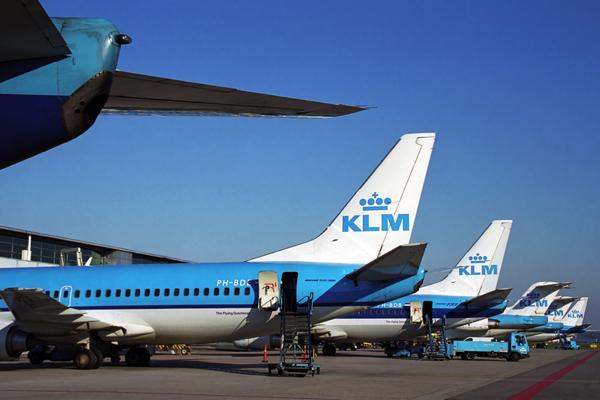KLM Outlines Potential Network Reduction Due To Schiphol ‘Green Cap’

KLM could potentially drop up to 30 destinations from its network if the Dutch government proceeds with its plans to impose a “green cap” limiting movements at Amsterdam Schiphol (AMS) to minimize noise pollution and CO2 emissions.
This summer, the Dutch government detailed changes that would effectively limit Schiphol to a maximum of 440,000 flight movements per year with effect from November 2023. This marks a significant reduction from the current 500,000-movement cap, as well as reversing earlier plans that would have allowed growth to 540,000 movements—20% above the planned cap.
A KLM spokesperson declined to comment on contact between the airline and government, but Aviation Week Network understands that the Dutch carrier has warned the government that this change will have a “major impact” on its business, involving a downsizing of its 170-destination network.
At least five longer routes from AMS could also be on the line. Potential dropped destinations include Bahrain (BAH), Kuwait City (KWI) and Muscat (MCT) in the Middle East; Boston (BOS), Edmonton (YEG) and Montreal (YUL) in North America; and Osaka (KIX), Taipei (TPE) and secondary Chinese destinations such as Hangzhou (HGH) and Xiamen (XMN) in Asia.
The paper argues that the cap does not reflect KLM’s fleet-renewal plans, which includes the incorporation of less noisy and more efficient aircraft. If these are taken into account, Schiphol could operate 500,000 movements annually with less noise pollution than the government’s 440,000-movement cap. KLM urged politicians to re-run their calculations regarding Schiphol noise based on this data, rather than fleet details from 2018.
Speaking at the Aviation Festival in Amsterdam, KLM CEO Marjan Rintel acknowledged that a proposal has been submitted to the government regarding the cap. She gave few details, but said that KLM hopes to retain the current 500,000-movement cap and meet the government’s sustainability objectives through fleet renewal, rather than traffic limits.
The cap plan rubs salt into an already sore wound for KLM. Schiphol was unprepared for the post-COVID-19 passenger rebound, causing a summer of high-profile operational disruptions. In the position paper, KLM estimated the cost of this disruption at over €100 million ($99.1 million) so far and urged AMS to solve staffing and other problems by the end of the year.
At the Aviation Festival, Rintel said KLM’s hub and spoke model is “still valid” and her objective is to get back to normal operations this winter–and “for certain” by summer 2023. She is frustrated and disappointed, she said, with capacity currently sitting 20% behind where KLM expected to be. “The potential lost revenue because of this is big,” she said.
While the post-COVID-19 demand surge has impacted some airports quite deeply, others have come back from the pandemic relatively unscathed.
“During the pandemic, we recognized that Newton’s third law applied. ‘For every pandemic, there'll be an equal and opposite rebound,’” Dubai Airports CEO Paul Griffiths said. “We've not had a resource problem at all. We've been able to get the people, retain the people, train them, develop them.”
Griffiths said this is linked with having a globalized workforce, noting that 91% of the UAE’s staff are from overseas.
“We're a global industry,” he explained. “That should be accompanied with a globalized workforce, not having to rely on the local workforce to serve the aviation industry. This is where I think some countries in their immigration policies are perhaps not quite keeping up with modern times.”
